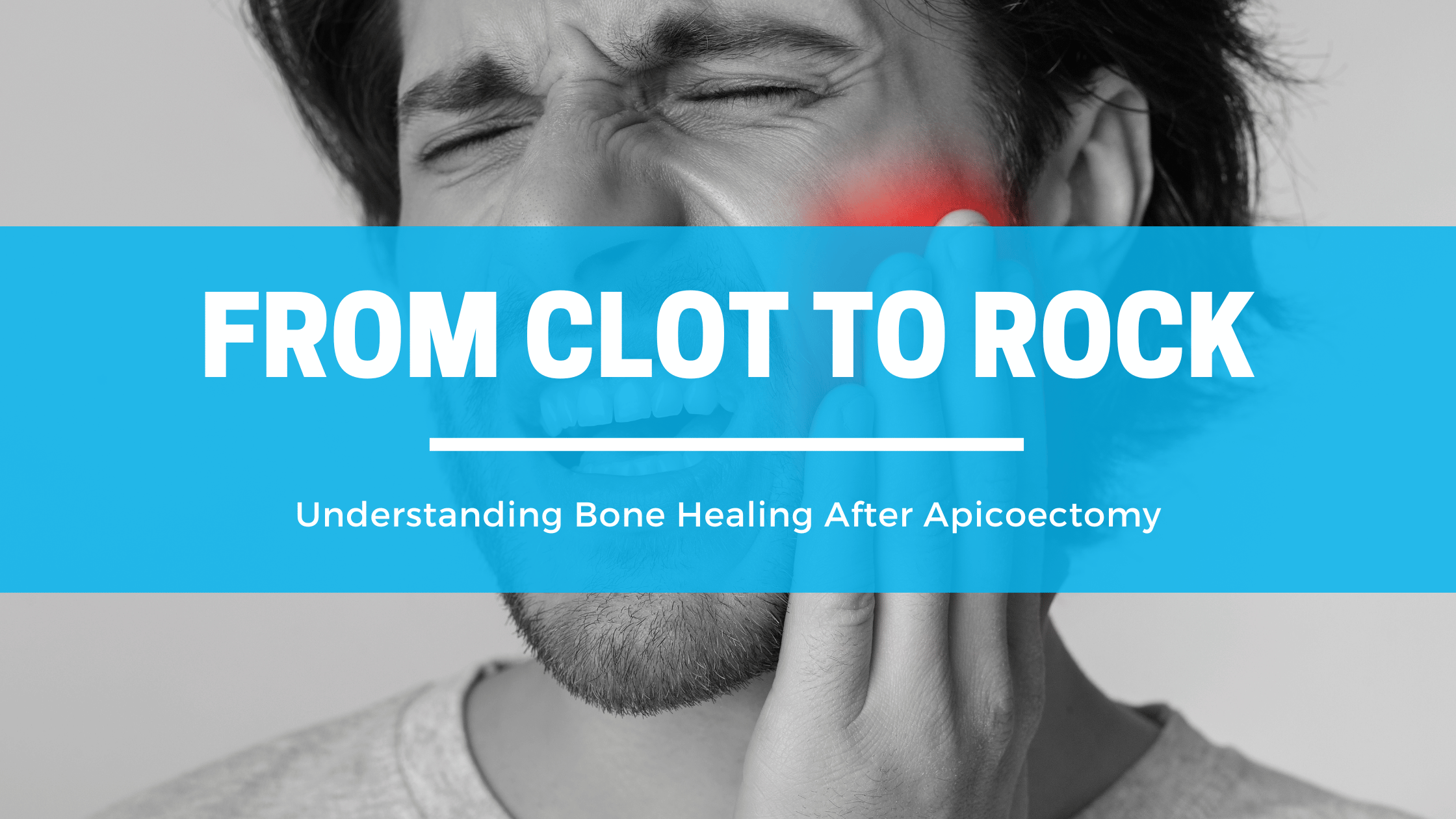An apicoectomy, also known as root-end surgery, is a surgical procedure that is performed to remove the tip of a tooth’s root and any infected tissue surrounding it. This procedure is often recommended when a root canal treatment has failed to adequately treat a tooth infection.
After an apicoectomy, the healing process is crucial for the success of the procedure. Bone healing is an important aspect of this process, as it helps to ensure that the tooth remains stable and functional. In this blog post, we will discuss the steps involved in bone healing after an apicoectomy.
Step 1: Blood Clot Formation
The first step in the bone healing process after an apicoectomy is the formation of a blood clot. When the tip of the root is removed, it leaves a small cavity in the bone. The body’s natural response is to fill this cavity with blood, which then clots to form a protective layer over the bone.
Step 2: Inflammation
Inflammation is a natural response of the body to any injury or trauma. After an apicoectomy, the surrounding tissue will become inflamed as a result of the surgical procedure. This inflammation is necessary for the healing process, as it brings in white blood cells and other immune system cells that help to fight off any infection and remove dead tissue.
Step 3: Bone Formation
Once the inflammation has subsided, the bone healing process begins. The body will start to produce new bone cells to fill in the cavity left by the removal of the root tip. This new bone formation is essential for the stability and functionality of the tooth.
Step 4: Remodeling
The final step in the bone healing process after an apicoectomy is remodeling. This process involves the reshaping and restructuring of the newly formed bone tissue. The body will continue to remodel the bone for several months after the surgery, ensuring that it is strong and functional.
Factors Affecting Bone Healing
Several factors can affect the bone healing process after an apicoectomy. These factors include:
Smoking: Smoking can interfere with the healing process by reducing blood flow to the surgical site and impairing the immune system’s ability to fight off infection.
Medical Conditions: Certain medical conditions such as diabetes, osteoporosis, and autoimmune disorders can also affect the healing process.
Medications: Certain medications, such as steroids and chemotherapy drugs, can interfere with the body’s ability to heal.
Infection: Infection at the surgical site can significantly delay the healing process and increase the risk of complications.
Poor Oral Hygiene: Poor oral hygiene can increase the risk of infection and delay the healing process.
Tips for Promoting Bone Healing after an Apicoectomy
To promote optimal bone healing after an apicoectomy, patients should follow these tips:
Follow post-operative instructions: Patients should follow their dentist’s post-operative instructions carefully, including taking any prescribed medications and avoiding certain foods and activities.
Maintain good oral hygiene: Patients should brush and floss regularly to prevent infection and promote healing.
Avoid smoking: Patients who smoke should quit smoking or at least avoid smoking for several weeks after the surgery.
Eat a healthy diet: Eating a balanced diet rich in vitamins and minerals can promote healing and support overall health.
Attend follow-up appointments: Patients should attend all follow-up appointments with their dentist to ensure that the healing process is progressing as expected.

In conclusion, bone healing after an apicoectomy is a complex process that involves several steps. The formation of a blood clot, inflammation, bone formation, and remodeling are all essential for the success of the procedure. Patients should follow their dentist’s post-operative instructions carefully and take steps to promote optimal healing, including maintaining good oral hygiene, avoiding smoking, eating a healthy diet, and attending follow-up appointments.
It is important to note that the healing process after an apicoectomy can take several months, and patients should be patient and allow their body to heal properly. Any concerns or complications should be discussed with their dentist promptly.
In some cases, additional treatment may be necessary to promote bone healing after an apicoectomy. This may include bone grafting or other procedures to support the growth of new bone tissue. Your dentist will discuss all treatment options and develop a personalized treatment plan based on your individual needs.
In summary, bone healing after an apicoectomy is a critical component of the success of the procedure. By following post-operative instructions and taking steps to promote healing, patients can ensure the best possible outcome and maintain the health and functionality of their teeth for years to come.





Leave A Comment